If you’re up-to-date on the latest health trends, you’ve probably heard about “microdosing.” While this technique is commonly associated with LSD, it has become a hot topic in the cannabis community. Indeed, as marijuana goes mainstream, more people want to “get by” rather than “get high!” Microdosing promises to relieve a patient’s symptoms without hindering their day-to-day productivity.
How To Microdose Cannabis — A Beginner’s Guide
But what exactly is microdosing, and how does it work with low-THC cannabis? Most importantly, is microdosing cannabis right for you?
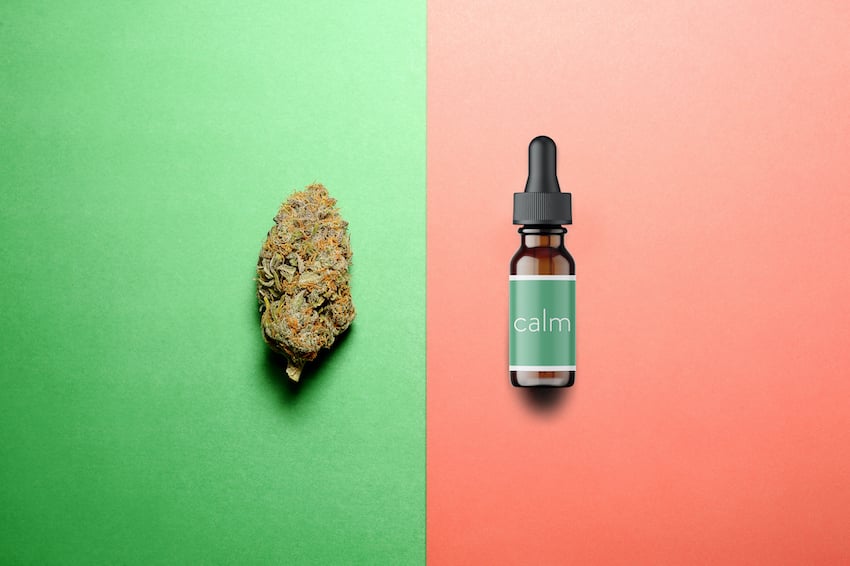
What The “Hemp” Is Marijuana Microdosing?
Microdosing is precisely what it sounds like: taking a small amount of a given substance throughout the day. In a way, you could think of microdosing as similar to taking prescription meds—except the “medications” in this case are mind-altering substances.
Nobody’s sure where “microdosing” originated, but it gained serious traction in California—particularly Silicon Valley. Even today, when people talk about “microdosing,” they are usually referring to techies who take tiny amounts of LSD. Supposedly, this small dose of psychedelics helps employees think “out of the box” without getting “zoned out.” Some microdosing proponents also claim it eases excess stress or keeps depression at bay.
As more states began legalizing weed, some cannabis customers applied these microdosing principles to pot. Instead of smoking a ton of THC in one go, these tokers deliberately take a touch of THC throughout the day.
Whether you’re talking about marijuana or magic mushrooms, microdosing should only have a sub-perceptible effect. If you feel “high” or “trippy,” then you’re not microdosing. Microdosers may feel a slight buzz, but it should not impede their work performance.
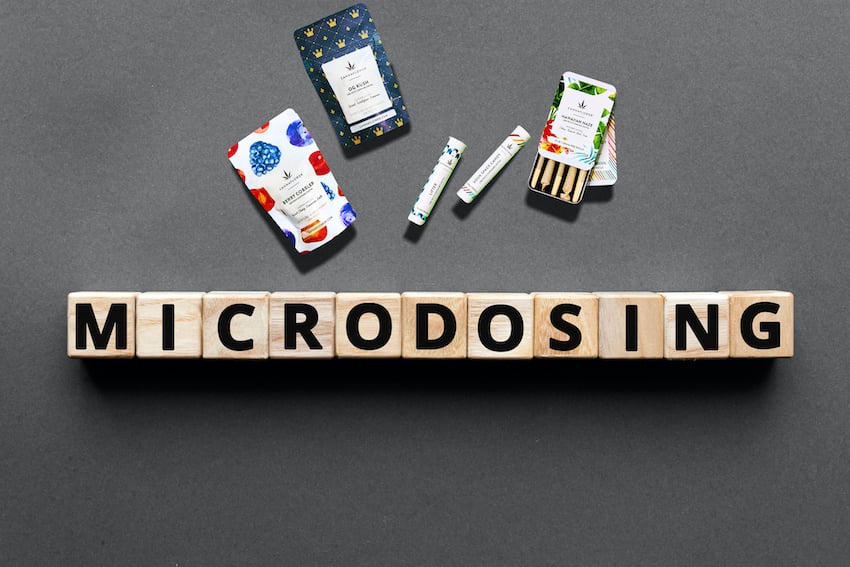
Why Do People Microdose Cannabis?
Ironically, microdosing goes against what many cannabis cultivators focused on throughout the 20th century. During these decades, most customers wanted incredibly intense strains for recreational use. To satisfy this “high” demand, growers from Anaheim to Amsterdam tried to cultivate hybrids with elevated THC counts. With increased cannabis legalization, however, customers seem to have shifted their smoking preferences.
Now that THC isn’t so taboo, more customers are curious about using cannabis in their day-to-day lives. Rather than getting “stoned” on a Saturday night, these consumers want to incorporate weed into their workweek. Microdosing cannabis is supposed to enhance productivity, creativity, and overall mental function.
Another reason people try microdosing has to do with THC’s side effects. Not everyone can tolerate THC at high doses. In fact, some people may experience panic attacks, confusion, or lethargy if they take too much THC. At lower levels, however, THC could exert a more therapeutic effect on patients.
Lastly, some people claim microdosing makes it harder to build a THC tolerance. One of the downsides of regularly consuming cannabis is that it’s easy for cannabinoid receptors to get dull. After about a week of regular use, most tokers complain that they need more cannabis to feel the same effects. Since microdosers only use a sub-perceptible amount of cannabis, it takes longer to build up a tolerance.
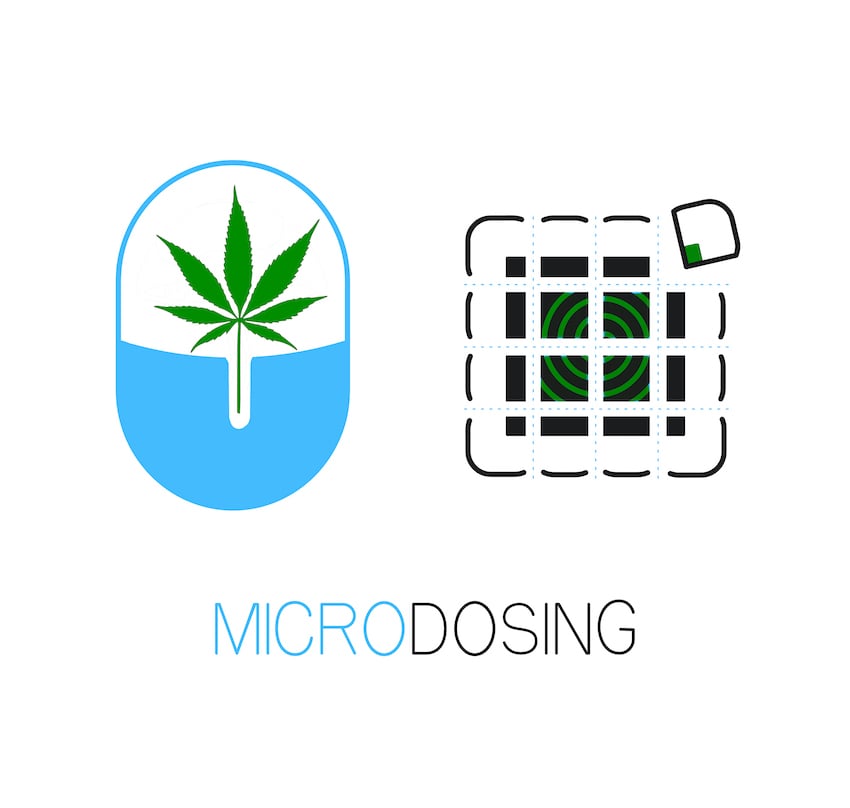
How Much Cannabis Qualifies As A Microdose?
There’s no such thing as an ideal cannabis microdose. Since we all have different genes and goals, there will never be a universal microdosing strategy. Figuring out your perfect “microdose” will take patience, persistence, and plenty of note-taking.
Indeed, the best way to determine your ideal dosing regimen is to record your cannabis consumption in a journal. Every day, write down what cannabis product you’re using (i.e., edible, tincture, or flower) and how much you took. You may also want to record any noticeable effects at the end of the day.
For the most accurate results, you should use cannabis goods with a high absorption rate and are relatively easy to measure. While cannabis tinctures are ideal, microdosers could also use vape juices or cannabis flowers. Smoking cannabis may not be as accurate as taking sublingual doses, but flowers nowadays should come with lab-verified cannabinoid percentages. Plus, once you find a strain you’re comfortable with, you should know how many “tokes” it takes to work for you.
Always remember that microdosing shouldn’t make you feel “high.” Instead, you should feel slightly uplifted without sacrificing productivity.
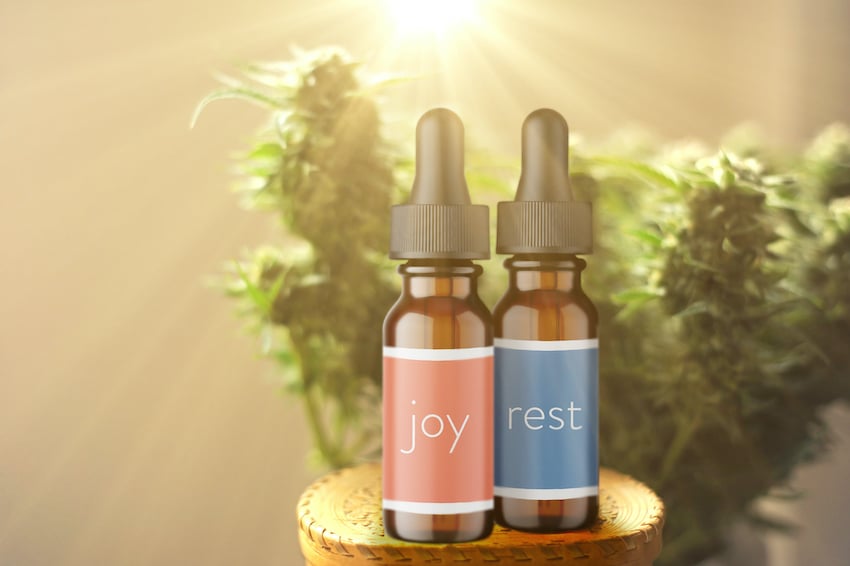
Cannaflower CBD Hemp Strains — The Mellow Way To Microdose
Microdosing cannabis isn’t an exact science. However, the best way to curb THC’s potency is to use strains with more CBD. As you smoke or vape Cannaflower’s hemp nugs, there’s very little chance you’ll feel “stoned.” Not only do our strains have ≤ 0.3 percent THC, they contain high amounts of the non-psychoactive cannabinoid, CBD. This makes our cultivars ideal for people who want all the benefits of cannabis without sacrificing productivity.
If you’d like to learn more about Cannaflower’s CBD hemp offerings, please click on this link.
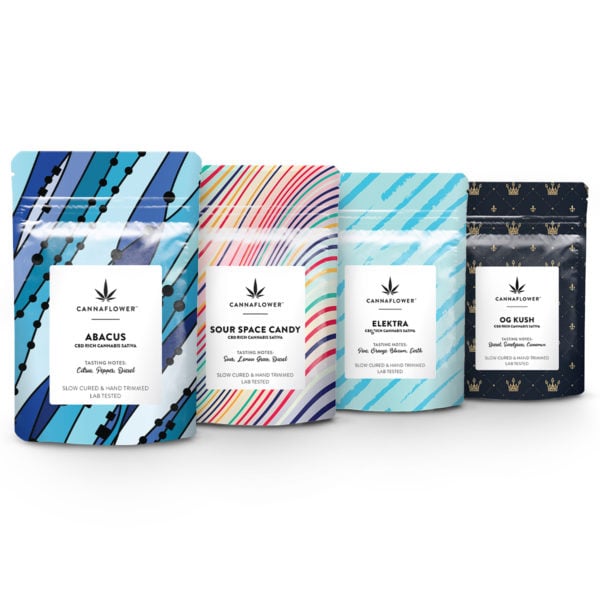
Take a Taster’s Menu home today!
Discover your favorite new Cannaflower strain. This Taster’s Menu is a great way to sample some of our most popular flower!


